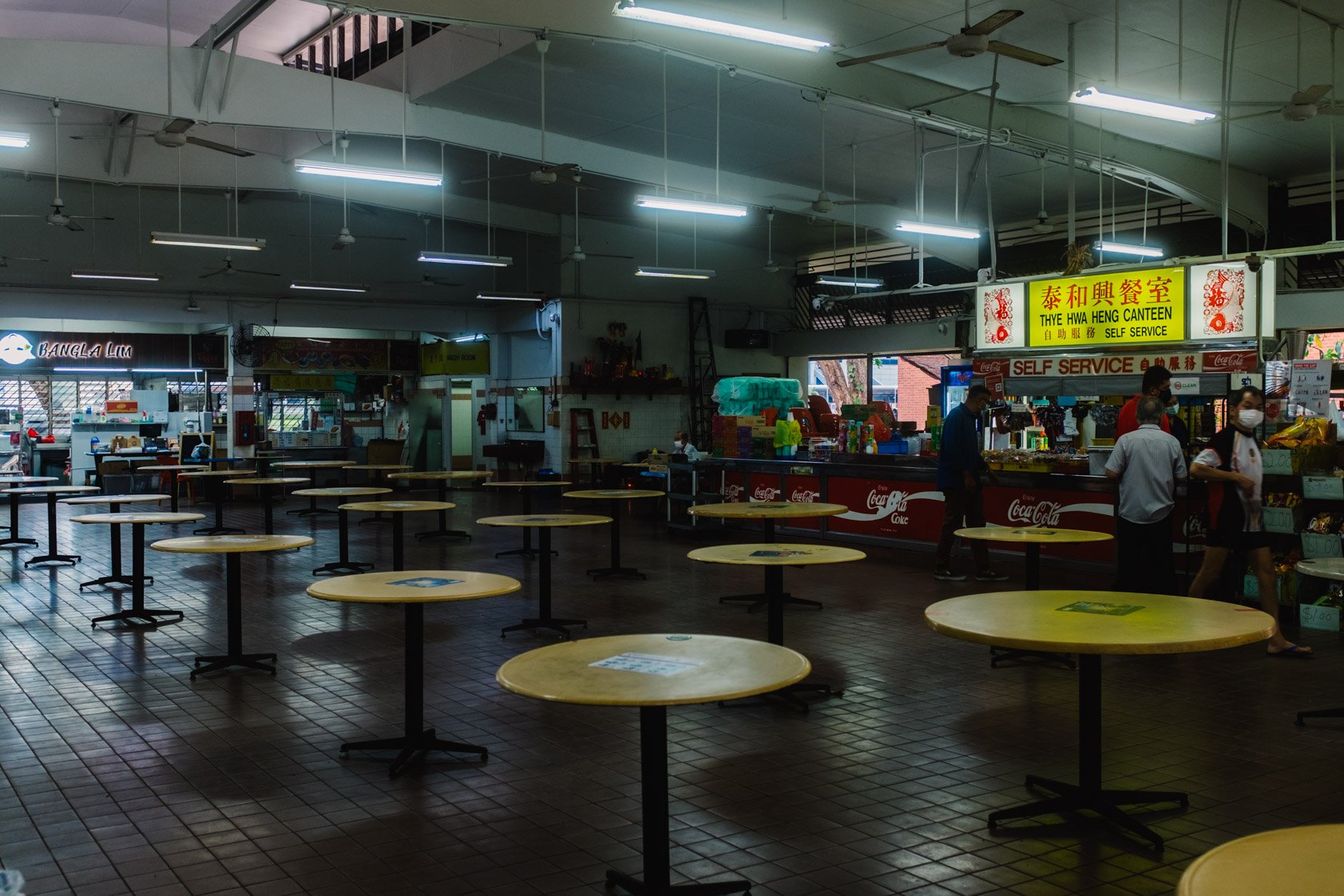Tucked Away: Documenting the kopitiams, eating houses and food courts of Singapore’s industrial areas
Elephnt
It’s a hot, muggy Saturday afternoon in 2019 and a woman is loudly singing a Hokkien love song somewhere in Ang Mo Kio Industrial Park 2. I walk into Yi Jia Food Centre to see a stage, the singer and her hawkers lounging around. “We’re closed today!”, someone barks at me in Chinese. “Next song?”, someone else asks. The disco lights begin their slow, dreamy spin and the industrial park’s food centre and workshops echo with song again.
Karaoke at Yi Jia Food Centre, Ang Mo Kio
Often described as ‘tucked away hidden gems’, the kopitiams [1], eating houses and food courts of Singapore’s industrial areas are perhaps out of sight and mind for most people. These food places however play an important role in serving the everyday F&B and entertainment needs of certain Singaporean and migrant workers. There is the driver of a 24-foot truck who pulls up at Jin Ling Food Court for kopi o kosong [2] after his all-nighter drive from Malaysia. The Bangladeshi welder waiting in Thye Hwa Heng Canteen for his take-away lunch of murgir jhol [3]. The middle-aged workers from Kolam Ayer 2 Industrial Park who troop over to neon-lit 5 Kallang Food Centre to while away a Friday afternoon with beers and small talk. The needs of these workers are met by a small workforce of hawkers, hawker assistants, and cleaners spread out across Singapore’s industrial areas. Together, these hawkers and their customers form little communities of their own in Benoi, Senoko, Tuas South and other industrial areas. Communities with their own names such as 64 + 4 Food Court (the “+ 4” may forever remain a mystery to me) and their own cultural practices e.g. the karaoke singing hawkers of Yi Jia Food Centre.
Juz Eat drinks stall at Jin Ling Food Court, Senoko
Thye Hwa Heng Canteen, Eunos
64 + 4 Food Court, Loyang
Boh Geh Uncle Canteen, Seletar
My first photos of these food places were incidental, often taken to complement other things I was documenting in the industrial parks and estates. This changed with the outbreak of Covid-19. While others have documented the plight of hawkers and hawker centres (open-air multi hawker stall complexes located in Singapore’s public housing estates (Tung 2020)) during the pandemic, I wondered how their industrial area counterparts were getting by and getting on. For Hawker! Hawker!, I decided to re-visit and document these kopitiams, eating houses and food courts. Between June to December 2021, I travelled to 38 of these food places located along streets with unfamiliar names such as Gul Lane, Sungei Kadut Street 1 and Pandan Loop. Tucked Away is a presentation of 86 photographs of these food places. Some capture the timelessness of some of these food places, seemingly unchanged since their construction in the 70s and 80s. Others highlight the changes wrought by the ongoing global pandemic or hint at changes to come as Singapore’s light, heavy and F&B industries embrace ‘smarter’ technologies.
Defu Eating House, Defu
Kranji Food Stall at Chop See Mui Eating House, Sungei Kadut
4013 Coffee House, Ang Mo Kio
Min Lock Eating House, Senoko
AB Food Court, Changi
Playground at 5 Kallang Food Centre, Kallang














